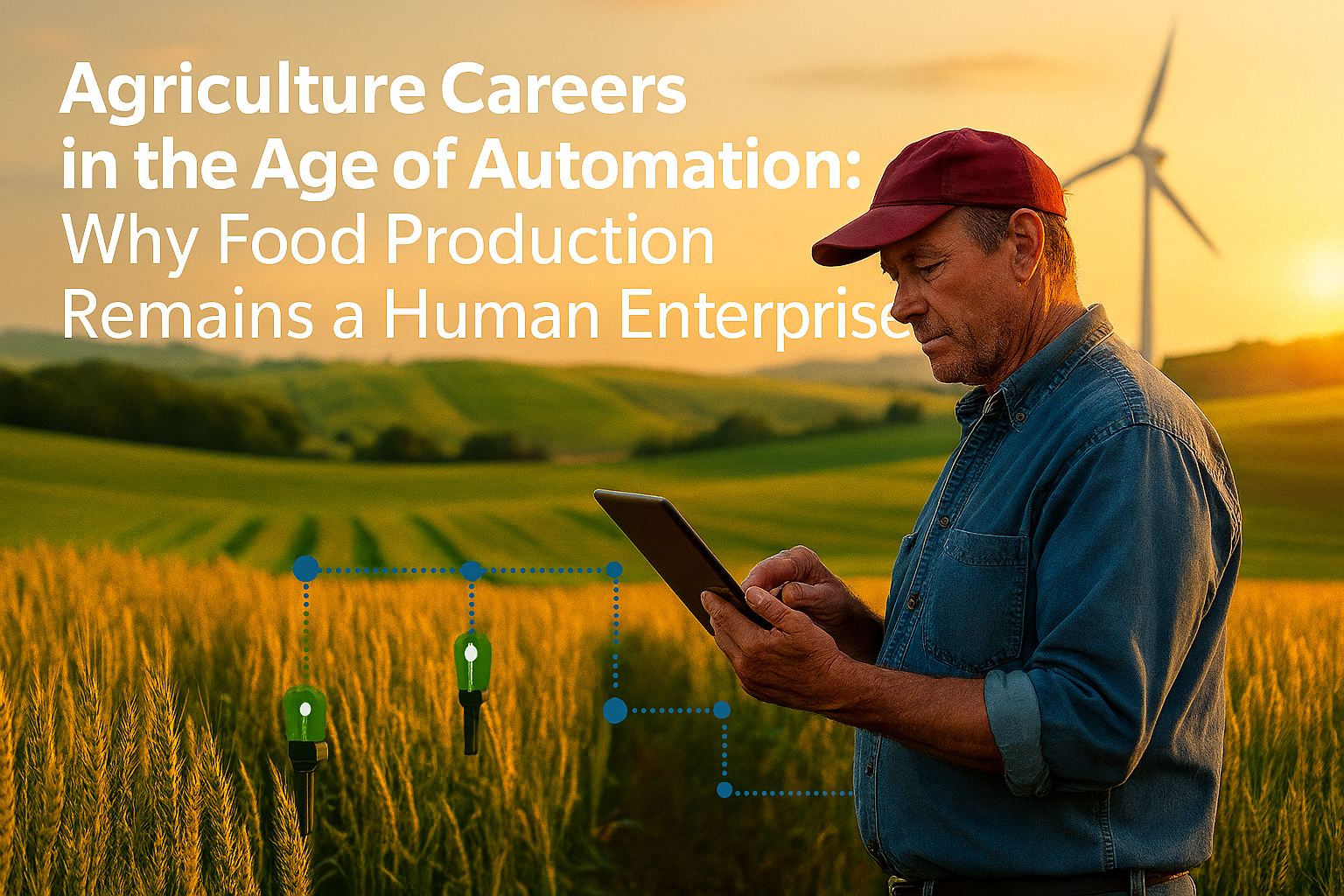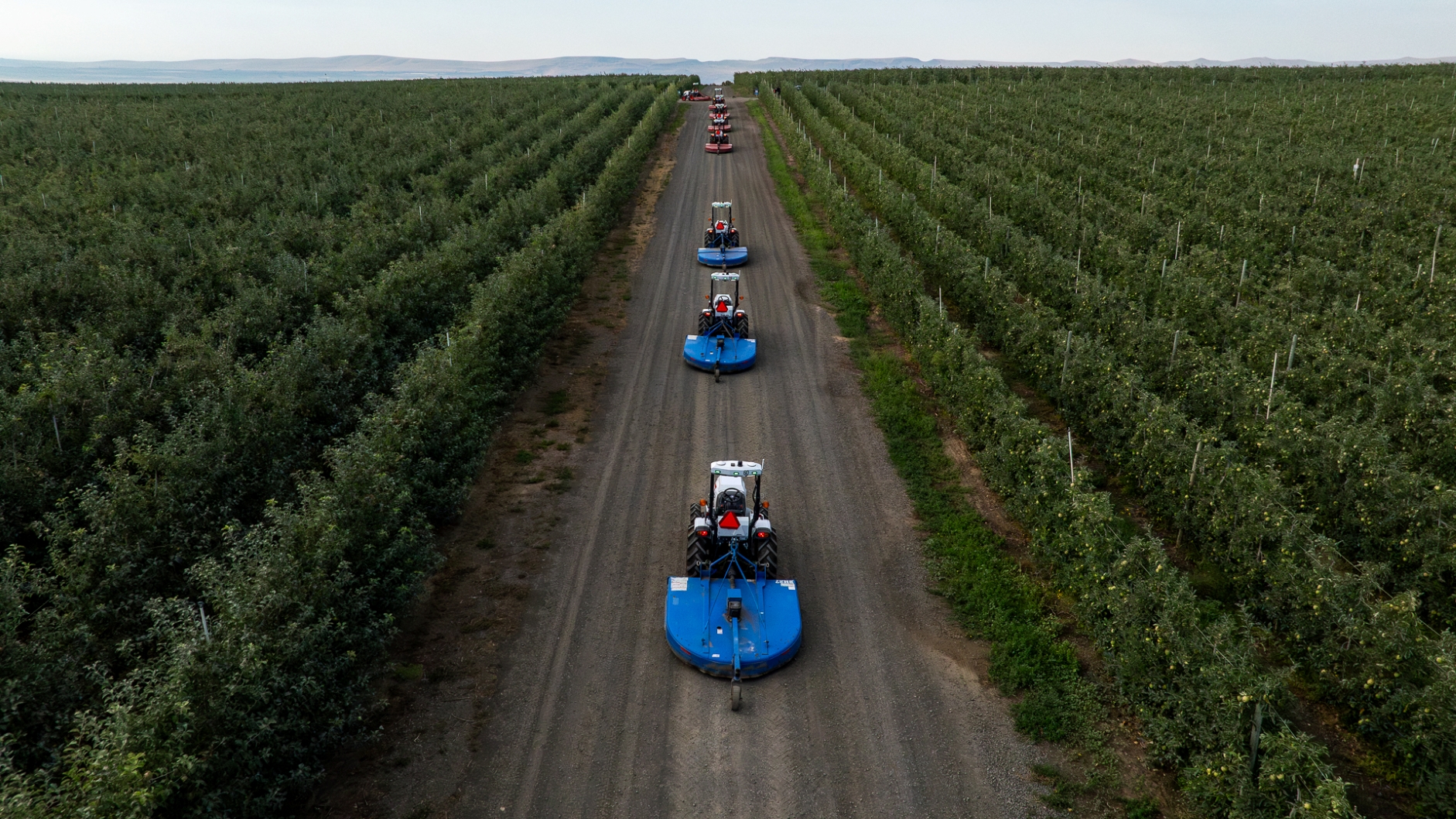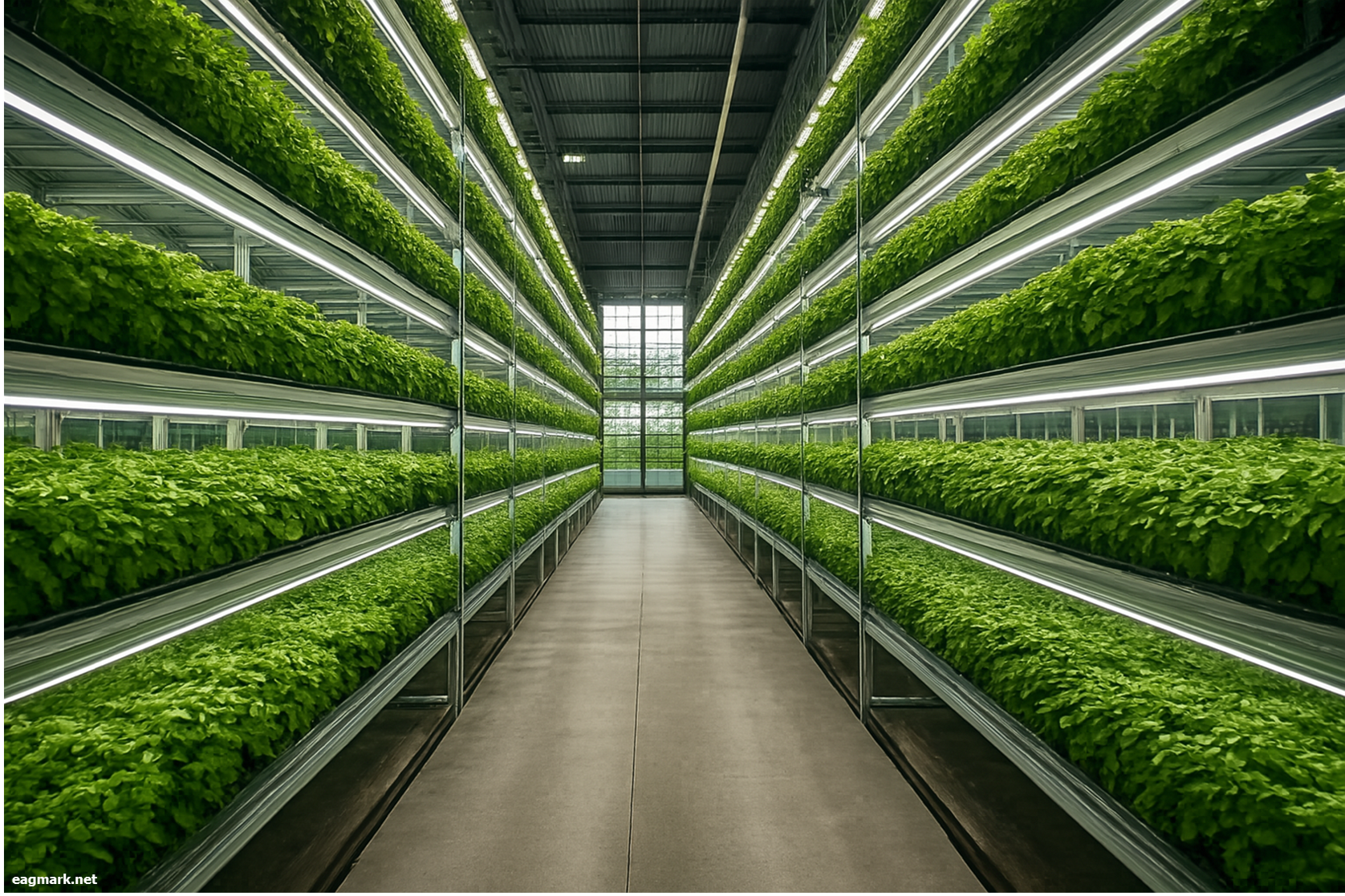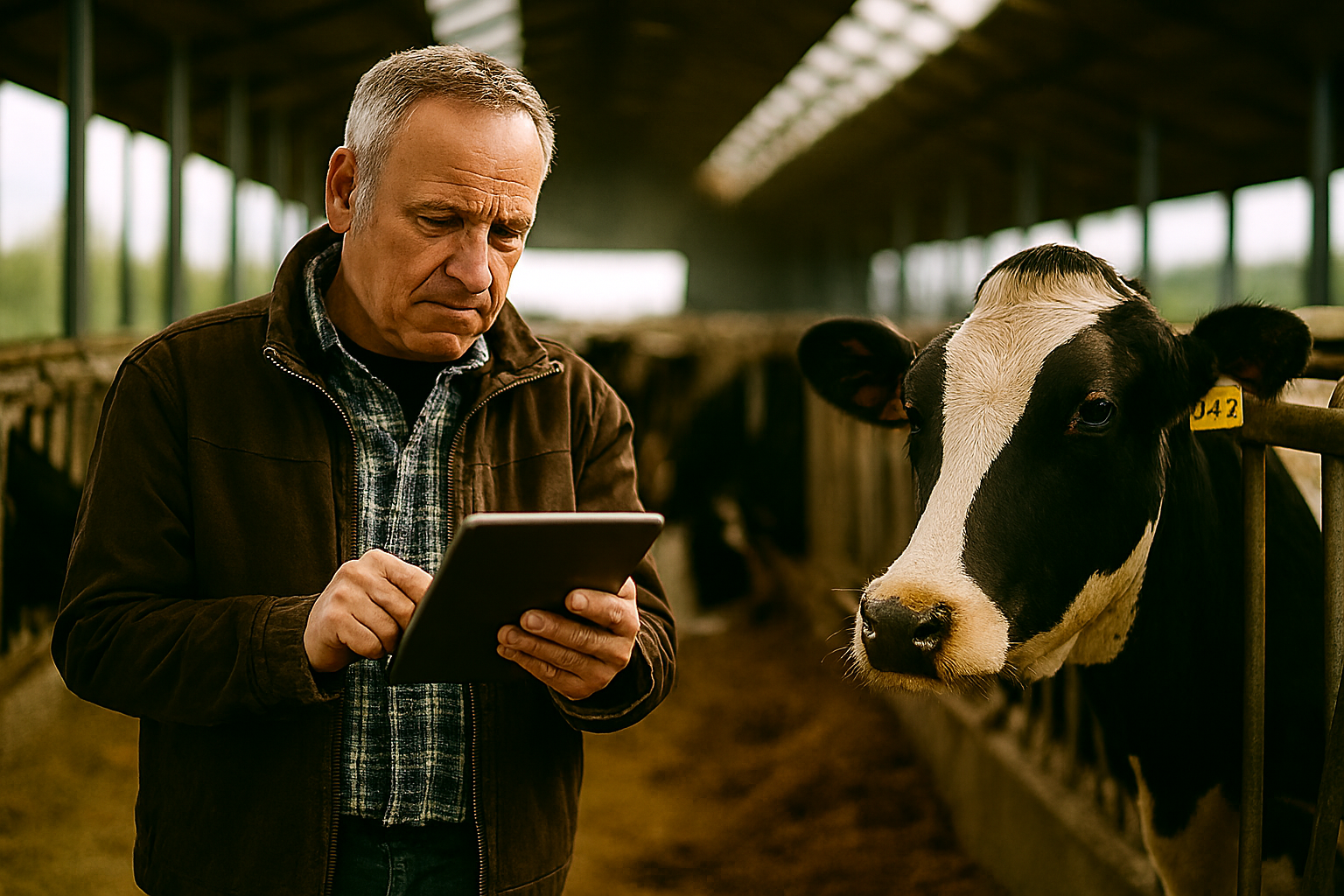
The conversation around artificial intelligence and automation often centers on job displacement. Yet amid the technological upheaval reshaping industries from finance to manufacturing, agriculture stands out as a sector where human expertise not only persists but becomes increasingly valuable.
The Global Food Security Imperative
The numbers tell a compelling story about agriculture's future relevance. According to the Food and Agriculture Organization of the United Nations (FAO), the world's population will reach 9.1 billion by 2050—representing a 34 percent increase from 2009 levels. To feed this larger, more urban, and wealthier population, food production must increase by 70 percent, with annual cereal production needing to rise from 2.1 billion tonnes to approximately 3 billion tonnes.
Recent meta-analyses paint a more nuanced picture of the challenge ahead. A comprehensive review published in Nature Food examined 57 global food security studies and found that total global food demand is expected to increase by 35% to 56% between 2010 and 2050 across various socio-economic scenarios. The scale of this challenge ensures sustained demand for agricultural professionals across multiple specializations.
The UN emphasizes that producing enough food alone won't guarantee food security, as roughly one-third of all food produced for human consumption—approximately 1.3 billion tonnes annually—is currently lost or wasted. This systemic inefficiency creates opportunities for professionals focused on supply chain optimization, food technology, and sustainable agriculture practices.
Technology as Enhancement, Not Replacement
The relationship between technology and agricultural employment defies simple narratives about automation-driven job loss. While precision agriculture technologies like variable rate fertilizer applications and yield monitoring have been available since the 1990s, only 27 percent of U.S. farms or ranches used precision agriculture practices to manage crops or livestock as of 2023, according to USDA reporting.
This adoption gap reveals something crucial: agricultural technology augments rather than replaces human decision-making. The USDA Economic Research Service reports that guidance autosteering systems on tractors and harvesters were used by 52 percent of midsize farms and 70 percent of large-scale crop-producing farms in 2023—up dramatically from single-digit adoption rates in the early 2000s. These systems haven't eliminated farm operators; they've made them more productive and reduced operator fatigue.
The U.S. Government Accountability Office identifies multiple benefits of precision agriculture, including increased profits through higher yields with equivalent inputs, reduced application of fertilizers and herbicides, and environmental benefits from preventing chemical runoff into waterways. Yet implementing these technologies requires skilled professionals who understand both agricultural science and data analysis—a combination that commands premium compensation.
The Reality of Agricultural Compensation
Contrary to outdated perceptions of agricultural work as low-paid manual labor, modern agricultural careers offer competitive and often lucrative compensation, particularly for those with technical skills and formal education.
According to the U.S. Bureau of Labor Statistics, the median annual wage for agricultural and food scientists was $78,770 in May 2024, with the highest 10 percent earning more than $140,080. Farmers, ranchers, and other agricultural managers earned a median annual wage of $87,980 in May 2024, with top earners exceeding $156,530.
The USDA Economic Research Service reports that real wages for agricultural workers rose at an average annual rate of 1.2 percent between 1990 and 2024, with average hourly wages for hired agricultural managers reaching $30.70 in 2024. For comparison, the median annual wage for agricultural workers overall was $35,980 in May 2024, representing stable employment in an essential sector.
The career trajectory matters significantly. Data from the 2022/2023 Entry-level Salary Information for Recent Graduates in Agriculture and Related Disciplines shows that all nine agricultural sectors experienced positive salary gains, with an overall average increase of 6.7 percent, ranging from 1.4% to 18.7% across different specializations.
Diverse Career Pathways Beyond Traditional Farming
Modern agriculture encompasses a spectrum of roles that extend far beyond fieldwork. The sector needs professionals in:
Agricultural Engineering and Technology: Designing automated irrigation systems, developing sensor networks for crop monitoring, and creating precision application equipment.
Food Science and Innovation: Developing alternative proteins, improving food safety protocols, and extending shelf life through better preservation methods.
Agricultural Economics and Business: Analyzing commodity markets, managing supply chains, and developing risk management strategies for agricultural enterprises.
Sustainability and Environmental Management: Implementing conservation practices, measuring carbon sequestration, and designing regenerative agriculture systems.
Data Science and Analytics: Building predictive models for crop yields, creating decision support systems, and optimizing resource allocation through machine learning.
In the US, Federal support for these career paths is substantial, with the USDA and National Science Foundation providing nearly $200 million for precision agriculture research and development funding between fiscal years 2017 and 2021.
The Climate Challenge as Career Catalyst
Climate change simultaneously threatens agriculture and creates unprecedented career opportunities for those who can develop adaptive solutions. The Environmental and Energy Study Institute reports that climate-related jobs in the United States are expanding rapidly, with clean energy job creation growing at 3.9 percent in 2022—outpacing overall job growth. The sector supported more than 4.2 million jobs in 2022.
Within agriculture specifically, climate adaptation creates demand for professionals who can develop drought-resistant crop varieties, design water-efficient irrigation systems, implement soil health monitoring programs, and create carbon credit verification protocols. The American Society of Adaptation Professionals represents about 1,400 individuals and over 40 organizational members employing more than 180,000 people, with at least 1,500 professional-level adaptation jobs hired in 2022 alone.
Job boards now feature thousands of positions at the intersection of agriculture and climate adaptation, from climate-smart extension agents to agricultural sustainability analysts. These roles typically require interdisciplinary knowledge spanning environmental science, agricultural production, and business management.
Educational Pathways and Skill Requirements
The modern agricultural professional combines biological sciences with data literacy and business acumen. Successful careers in the sector increasingly require comfort with:
Remote sensing and satellite imagery interpretation
Geographic Information Systems (GIS) for spatial analysis
Statistical analysis and predictive modeling
Financial analysis and enterprise budgeting
Regulatory compliance and environmental policy
Communication skills for stakeholder engagement
The USDA National Institute of Food and Agriculture notes that university extension programs provide valuable educational and application assistance to help producers become more familiar with and use new technologies, helping to mitigate barriers to adoption for smaller producers.
Educational requirements vary by specialization. Entry-level agricultural technician positions may require only associate degrees or certificates, while advanced research positions, food science careers, and agricultural engineering roles typically require bachelor's or graduate degrees. The diversity of educational pathways makes agriculture accessible to individuals with varying levels of formal education who are willing to develop relevant skills.
Market Outlook and Employment Projections
The US Bureau of Labor Statistics projects overall employment of agricultural and food scientists to grow 6 percent from 2024 to 2034—faster than the average for all occupations, with about 3,100 openings projected each year. This growth occurs even as employment of traditional farmers and ranchers is projected to decline by 1 percent due to farm consolidation and efficiency improvements.
This apparent contradiction reveals the sector's evolution. Traditional production-focused roles face pressure from mechanization and consolidation, while knowledge-intensive positions in agricultural science, technology development, and sustainability consulting expand. According to USDA data, employment in agriculture rose from 1.07 million in 2010 to 1.18 million in 2024, a gain of 10 percent, with the highest increases in crop-support services and the livestock sector.
The precision agriculture market exemplifies this growth trajectory. Industry research indicates the global precision agriculture market reached approximately $12.52 billion in 2024, with projections pointing toward $43.64 billion by 2034, driven by a robust 13.3% compound annual growth rate.
Addressing Challenges and Barriers
The agricultural sector faces real challenges in workforce development and technology adoption. High up-front acquisition costs for the latest technologies can be prohibitive for farmers with limited resources or access to capital, while the absence of uniform standards can hamper interoperability between different precision agriculture technologies.
Adoption rates of precision agriculture technologies increase sharply with farm size, with small family farms having the lowest rates of use within each technology category. This creates a bifurcated job market where large-scale operations offer more opportunities for technical specialists, while smaller farms may struggle to implement advanced systems.
Rural broadband access remains a persistent obstacle. The Association of Equipment Manufacturers emphasizes that leveraging GPS-driven precision agriculture technologies requires adequate infrastructure, including strong wireless capability accessible by machinery in the field.
Building Your Agricultural Career
For those considering agriculture as a career path, several strategies can accelerate entry and advancement:
Gain Practical Experience: Internships with agricultural companies, research stations, or cooperative extension programs provide hands-on exposure to industry practices and networking opportunities.
Develop Technical Skills: Proficiency with data analysis tools, GIS software, and agricultural management systems increasingly differentiates candidates in the job market.
Pursue Relevant Education: While four-year degrees offer the broadest opportunities, specialized certificates in precision agriculture, soil science, or agricultural business can provide targeted skills for specific career paths.
Engage with Industry Organizations: Professional associations and various commodity-specific groups offer continuing education, networking, and job placement assistance.
Consider Geographic Flexibility: Agricultural opportunities concentrate in specific regions based on production systems — if in the US, crop production in the Midwest, specialty crops in California, livestock operations across multiple states, and agtech hubs in urban centers.
The Human Element in Food Production
The persistent need for human judgment in agriculture stems from the sector's inherent complexity and variability. Weather patterns, pest pressures, soil conditions, and market dynamics create decision environments that resist full automation. Technology provides better data and more precise execution, but strategic planning, risk management, and adaptive problem-solving remain fundamentally human activities.
As industry analysts note, precision agriculture adoption depends on farmers seeing compelling reasons to invest in new technologies and having the financial capacity to do so. During periods of depressed commodity prices, technology adoption slows—reminding us that agriculture operates within economic realities that technology alone cannot overcome.
The agricultural sector offers career paths that combine intellectual challenge, technological innovation, tangible impact on food security, and competitive compensation. For those seeking meaningful work with long-term stability, agriculture presents opportunities that automation enhances rather than threatens.


